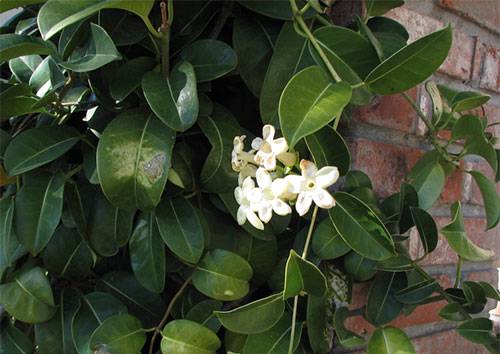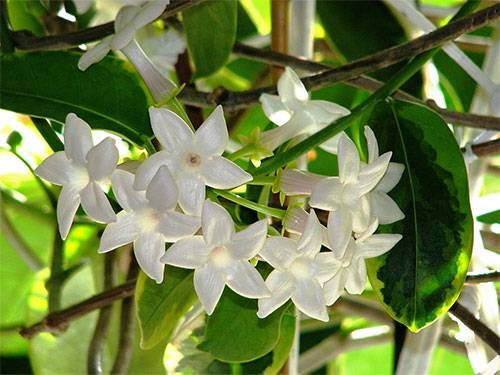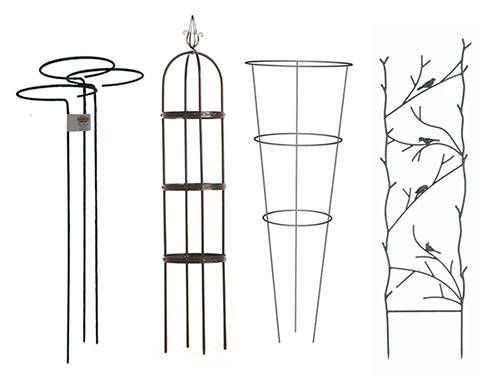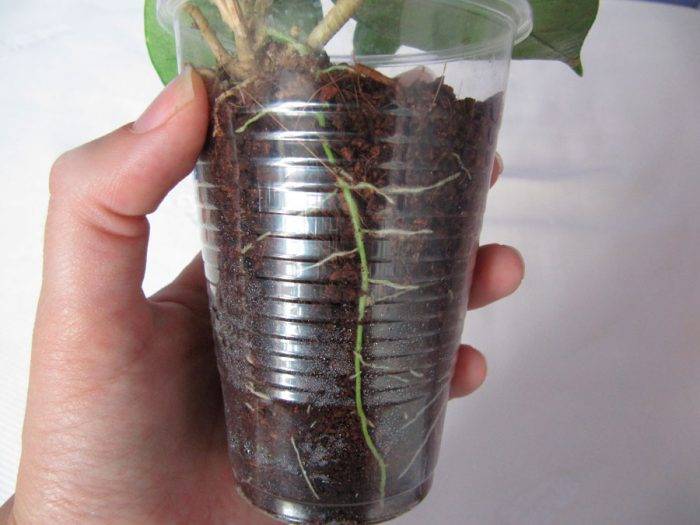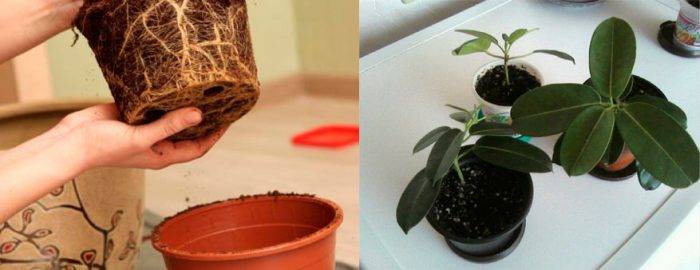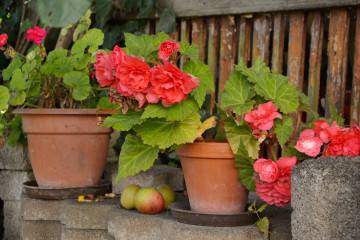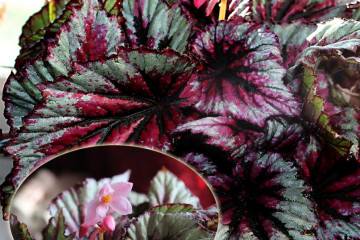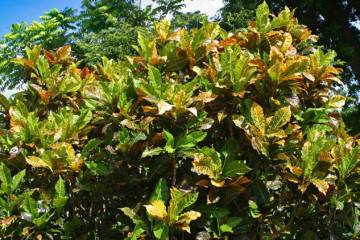Stefanotis - home care and varieties
Content:
Abundant Stefanotis is a representative of tropical lianas, which can please the eye in an apartment, private house or greenhouse. Subject to the rules of care, it can become a pearl of the collection of any amateur grower.
What does it look like, which family it belongs to
The very name of Stephanotis is translated from Latin as "a crown of ears". The name is due to the appearance of the inflorescences, consisting of five petals, similar to the ears of animals. Most often it is called Stephanotis Madagascar Jasmine, although the origin of the plant is not precisely determined. A flower from the Lastovnev family is widespread both in Madagascar and in the forests of Japan, China, Malaysia, Cuba and the Pacific Islands, but it is more often called African.
Stephanotis was first described by botanical scientists at the beginning of the 19th century. Mentions of the plant in books, collections and scientific works can be found since 1806.
The plant is easily recognizable by its long vines, which always remain green. Reaching five meters, the stems grow stiff over time. Leaves up to nine centimeters in length and five in width are distinguished by a rich dark green hue, a leathery structure, an oval, pointed upward shape.
White, cream, pastel purple or yellowish flowers gather in inflorescences and live in their natural environment for up to ten months. After that, fruit-boxes are formed, from which, according to the principle of a dandelion, parachute seeds fly out over time.
Growing a tropical flower in small apartments is difficult - Stephanotis requires space, but for private houses, spacious studios and personal greenhouses, it will be a real boon.
Features of home care
It is possible to provide a stephanotis plant with home care if a number of conditions are met.
Lighting plays a key role. The jasmine flower is very fond of bright light, but does not tolerate direct sunlight. Therefore, in the summer season, it is best to place it by a window on the north-west side, and in winter, add light to the plant with the help of lamps. A fluorescent glow works best. Important nuances:
- it is recommended to choose a lamp power of 30 W;
- the optimal distance from the lighting device to the plant is a quarter of a meter.
The maximum temperature, even in the hot season, is 25 degrees Celsius. The minimum allowable values in winter are 16 degrees. In order to properly care for Stephanotis, drafts and sudden temperature fluctuations should not be allowed. For this reason, in areas where significant temperature changes are observed during the summer during the day, it is not worth transferring the plant to open terraces, balconies and personal plots.
For successful growth and flowering, it is important to pay attention to the soil in which the representative of the crotch is placed. The soil should be equipped with good drainage, be sufficiently loose and breathable. At the same time, after transplanting, the flower does not need additional nutrition, receiving everything it needs from the ground, but after six months or a year without transplants, you need to resort to feeding.From the beginning of spring to mid-summer, once every ten days, two hours after watering, it is enough to season the indoor flower Stephanotis with organic or mineral fertilizers diluted in water. The correct proportion is a teaspoon of nutritional composition to a three-liter can of liquid. Important notes:
- an increased nitrogen content in top dressing can enhance the growth of leaves and vines to the detriment of flowering;
- Potassium and phosphorus contribute to solving the problem of how to make homemade stephanotis bloom. It is better to season the soil with compounds with their high content in mid-May.
Watering features depend on the season. In winter, the frequency of soil moisture is reduced, and from early spring to late autumn, watering should be plentiful, but reasonable. It is impossible to allow stagnation of water in the pallets, it is also important to let the earth dry out between sessions.
Adequate air humidity - over 80 percent - is achieved by spraying. During the heating season, when the air in the premises dries up, you need to spray warm water over the sheet twice a day. Moreover, if Stephanotis grows in a sufficiently cool room, the dosage must be chosen carefully in order to prevent the development of the disease. Spraying is prohibited during the flowering season.
When and how it blooms
In nature, Stephanotis blooms up to ten months a year and has various shades of petals: cream, purple, bleached yellow, waxy, pinkish. They are distinguished by a sweet smell and a star-shaped shape.
Domestic species - Stephanotis floribunda - produces snow-white flowers that gather in crowns of five to seven pieces. Their aroma is not so pronounced and does not cause discomfort.
With proper care, homemade jasmine stephanotis begins to bloom at the end of May and pleases the eye until October.
Pruning
Stephanotis flower is formed only on fresh shoots of vines, so the plant must be cut at home.
At the beginning of the season - until mid-March - vines are pruned in moderation.
During flowering - during the summer months - the shoots need to be pinched to prolong the growth and opening of new buds.
How does it multiply
Stefanotis, reproduction can be carried out in two ways:
- from seeds. After flowering, stephanotis forms fruits, from which seeds spill out over time. But if in nature this is enough for new individuals to appear, then at home it is extremely difficult to get a result from a seed, and a positive result is rarely achieved;
- vegetative method. The answer to the question of how to effectively propagate Stephanotis at home is cuttings. In early spring, it is enough to cut off the tops of fresh shoots several “knees” long. It is better to treat the cut with a composition that stimulates growth, then deepen it half the length into a sand-peat mixture, organize a greenhouse hood and remove it to a warm place. The rooting period reaches two months. At the same time, it is important to maintain the soil temperature at 30 degrees Celsius and ventilate the cutting every day. The rooted units are transferred to the nutrient soil and pruned when they reach half a meter in length.
Stephanotis: how it reproduces
Stefanotis floribunda must be replanted annually to ensure proper home care. In this case, you should not choose spacious pots. The plant should be moderately cramped, so each subsequent pot is selected more than the previous one by a maximum of two centimeters in diameter. The need for replanting is also determined by the drying out of the soil.
For a new container, peat, fertile soil, coarse sand and compost are mixed in equal parts. A fifth of the pot should be occupied by expanded clay or other drainage
Possible growing problems
Caring for stephanotis can be difficult for a number of reasons. It is necessary to correctly establish a causal relationship and choose a "treatment" regimen:
- if the leaves of the flower begin to turn yellow and fall off, it is worth making sure that the plant has enough light, and also additionally soften the water using filter jugs, settling, using bottled soft water;
- lack of flowering may be due to excessive watering, temperature jumps, excessive shading. It is necessary to re-examine the conditions for growing a flower, to eliminate imbalances in the created microclimate;
- spider mites can hit the shoots. The risk is higher in winter when the air is dry. In this case, it is imperative to follow the rule of twice daily spraying with warm water. With sufficient humidity, pests have no chance of survival;
- excessive dryness of the soil and air is also the answer to the question: why do the buds wither or fall off. Also, drafts and moving flower pots during the ripening of buds lead to these troubles.
Views
Botanists distinguish more than ten types of stephanotis, for each of which nature has provided its own care. At the same time, only one type of stephanotis is still available for cultivation: profusely flowering (Latin name is floribunda). For this species, effective cultivation and care schemes have been developed in an urban environment.
It is not difficult to grow a flower at home if you know how it reproduces and what a tropical guest loves. The flower cannot be called easy to cultivate, but for lovers of growing indoor plants, caring for it will not cause difficulties. As a reward, Stephanotis can delight with almost six months of flowering.

